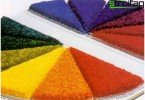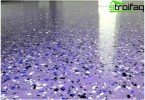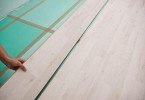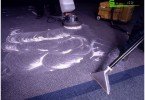Types of decorative plaster
Currently, the range of materials designed for wall decoration is huge and diverse. Everyone wants to change their home, but, alas, not everyone can afford a European-quality repair, so it is postponed for better times. Or family funds have to be saved for several years in order to fulfill a dream and transform a house / apartment. And you can solve everything differently and not expect manna from heaven, while spending a minimum of money and physical strength. Do-it-yourself decorative plaster is an excellent way out of this situation, because it can update the room and complement it with bright and saturated colors.
Content
- Advantages of decorative plaster
- Composition of solutions, differences
- Types of decorative plaster
- The possibilities of Venetian plaster
- Spectacular smooth plaster
- Variations on the theme of texture
- Stylish stone crumb
- Innovation – Flocking
The walls are in front of the eyes of a person and the first to attract attention. In the distant years, even primitive people decorated them with animal skins (peculiar trophies), painted with paints and later draped with fabrics. There are no exact historical data on the appearance of the first decorative coating for wall decoration. Most likely, it can be attributed to wallpaper from rice paper: they pasted the walls in Chinese houses (200 BC), or the famous Venetian stucco, invented back in Ancient Rome.
Such plastering is done easily, and the final result surprises and amazes any layman. In the past, the craftsmen used special shapes and ready-made stencils for cement that began to harden to apply the drawing. And especially dexterous masters had time to manually also apply patterns to the hardening mortar, for this they needed dexterity, a firm hand and a faithful eye. It was once, and today people invented a technological stucco compound, resistant to physical influences, weather temperatures, and besides, it hardens gradually.
Advantages of decorative plaster
The construction market offers consumers a huge variety: dozens of types of wallpaper, wood and plastic panels, interior, facade paints, cork, tiles. The list is long, but each coating is characterized by its advantages and some disadvantages. For example, if we consider the most common option – wallpaper and paints, then this is a wide range of patterns and colors, ease of application. But bad luck, they can lag behind the walls, are not too resistant to physical stress and abrasion. Yes, and for their application requires perfect surface leveling.
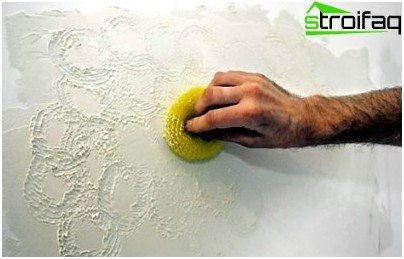
An interesting way to form a relief stucco pattern
Decorative wall covering is an important detail in interior design, giving it sophistication and individuality, its advantages are worthy of attention:
- amazing associative sensations from the material. For example, applying the effect of noble antiquity, you can create an emphasis on warmth, peace and coziness, and an aged stone – stability, confidence and refined taste. Well, the splendor of precious metal – reliability, luxury and unique chic;
- ecological cleanliness – the material is completely safe;
- uniqueness at the highest level – a variety of effects can satisfy the most sensitive aesthetic preferences. You can be one hundred percent sure that the applied decorative coating is unique in color and texture. Even the most qualified professional will not be able to make an absolutely identical result;
- durability and practicality – decorative plaster does not need any abstruse care, and the paint retains its color for a long time. Plus, the coating is resistant to mechanical stress (albeit light);
- The textured appearance of decorative plaster is characterized by excellent acoustic properties, the reason is a pronounced sound-absorbing effect. In addition, it helps to create a room with comfortable conditions for listening to sound recordings. The sound sounds unobtrusive and natural, as if the performers miraculously moved into the studio;
- long-term operation – decorative plaster lasts a long time until you get bored. The issue of changing color and texture is solved in such ways: repainting the coating in a different tone; removal of plaster to a concrete base, puttying to a state of flatness and subsequent decoration at its discretion;
- poorly absorbs odors;
- strong and vapor permeable coating;
- universality of use – plaster can be applied to almost any, but always pre-prepared surface: brick, concrete, metal;
- unimaginable variations and solutions – bizarre geometric patterns, natural patterns, imitation of marble, malachite, granite, different types of wood, fabrics and even leather – the flight of fantasy is unlimited, you can create and create an individual harmony.
Composition of solutions, differences
Of course, each type of decorative plaster has its own specific composition, but the basic components are the same:
- a binder is the basis for fixing the material to the surface;
- filler – an element that forms a decorative effect: sand, cellulose fiber, ground marble, flocks;
- solvent is water;
- auxiliary additives – enrichment of the product with additional properties: antifoaming agents, thixotropic additives, biocides.
A similar composition of the recipe was formed in the 80s of the last century. The popularity of decorative plaster is constantly growing, according to leading experts, this is the most dynamically spreading material and the most promising.
Types of decorative plaster
After a hard working day, everyone dreams of finding themselves in a fairy-tale world in order to relax their soul and body. It can be confidently stated that decorative plaster is the embodiment of art, original and exclusive..
Depending on the basis, decorative plaster happens:
- acrylic – from the name it is clear that the basis of the coating is acrylic resins. Main characteristics: low vapor permeability, good resistance to the external environment;
- mineral – the basis of this coating is cement, plaster is characterized by excellent vapor permeability and resistance to fire;
- silicate – the basis of such a plaster is water glass. Pros: all the same good vapor permeability, and the disadvantages are limited color gamut;
- silicone – plaster is made on the basis of silicone resins. High cost is a hallmark, but fully justified by excellent quality. And resistance to various pollution peremptory.
Important: according to the scope and climatic resistance, decorative plasters are divided into internal, external and universal.
The possibilities of Venetian plaster
This type of plaster perfectly imitates polished or partially polished stone (granite, limestone, malachite), and can resemble harvested fabric and embossed leather. When applying this finely divided highly plastic composition, special methods are used, the end result is a polished surface or a unique three-dimensional pattern.
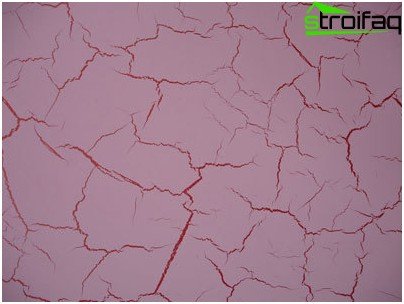
The possibilities of Venetian plaster are unlimited: it can perfectly imitate stone, leather, silk, using this technology creates a volumetric effect
The Venetian is characterized by remarkable decorative parameters, is easy to clean and has dirt repellent properties. The latter indicator is especially relevant when processing a finished wall with wax or protective varnish, then the coating is complemented by water-repellent properties and gains uniform gloss.
Spectacular smooth plaster
Stunning decorative effects – silk drapes, ripples on the water, pearl shell, light sea foam.
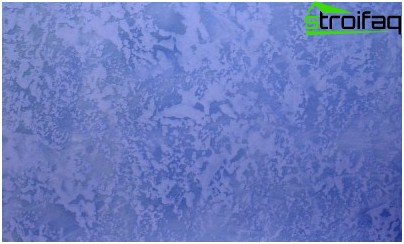
Smooth plaster is always unique, even the master himself can hardly repeat it.
Smooth coatings are very beautiful due to the play of color and the fine texture of paints and varnishes.
Variations on the theme of texture
This mixture can have different colors, it is based on synthetic materials with a variety of fillers (flax, cotton fiber).
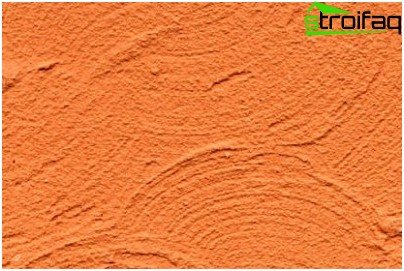
Textured plaster allows you to realize an unlimited number of amazing design ideas
In the classic version, the textured plaster is an imitation of masonry stone, bas-reliefs with a volumetric pattern, wood bark. After applying to the wall, the plaster acquires the texture of a certain filler, it looks original and hides surface defects.
Granular inhomogeneous mass with special granule additives, for example, fragments of quartz, wood fiber, is also used. The plaster does not need to be diluted, and is also characterized by extreme ductility and flexibility, it can be cleaned and washed.
Stylish stone crumb
This type of decorative plaster consists of real small pebbles mixed with adhesive and bonding components..
Important: this is a colder material, therefore it is recommended to use it in non-residential premises: corridor, bathroom, hall.
It is quartz, marble, granite, perfectly resists the weather and looks amazing. Outside, such decorative material is used to design individual architectural elements and the whole building.
Innovation – Flocking
This is a very interesting novelty, consisting of small particles of various sizes, colors and shapes..
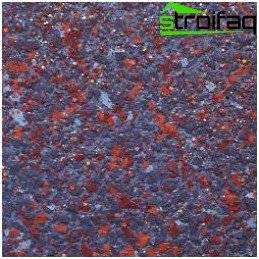
Flocking – a new word in decoration
This coating is easily washed with alcohol solutions, detergents, it is not afraid of light, fungal infections, strokes. In addition, it is odorless and easy to apply..
Plastering technology
The whole process consists of several stages:
Prepare the surface thoroughly
Before applying decorative plaster, it is necessary to rid the walls of the old coating, thoroughly clean the dust, dirt and then carry out a primer treatment.
Important: if any irregularities are noticed on the wall, it is advisable to eliminate them..
Direct application process
Each type of plaster has its own application technique, which is described in detail in the attached instructions. The plaster is mixed well and applied to the walls with a roller or a special spatula.
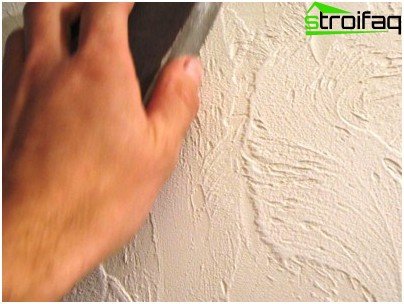
Decorative plaster is an amazing result, to achieve which the tools and even the hands of the finisher are applicable
As for consumption, it all depends on the desired effect and on proper use.
Important: after the end of this process, the plaster should dry (several days).
How and what to paint
The application of decorative plaster can be carried out in color or paint the surface after finishing work. It should be remembered that when painting with a roller (with a short pile), the recesses are not stained, that is, the final effect will differ from painting with a brush or spray gun. The end result depends on the imagination and personal preference..
Recommended Waxing
The final touch is the surface treatment with wax to protect it from pollution and obtain a gloss – glossy if beeswax is used, and matte if synthetic.
There are many options for decorative plaster, with its help you can realize the most incredible ideas and fantasies. And the work done by one’s own hands is doubly valuable, because a piece of soul is invested there.


